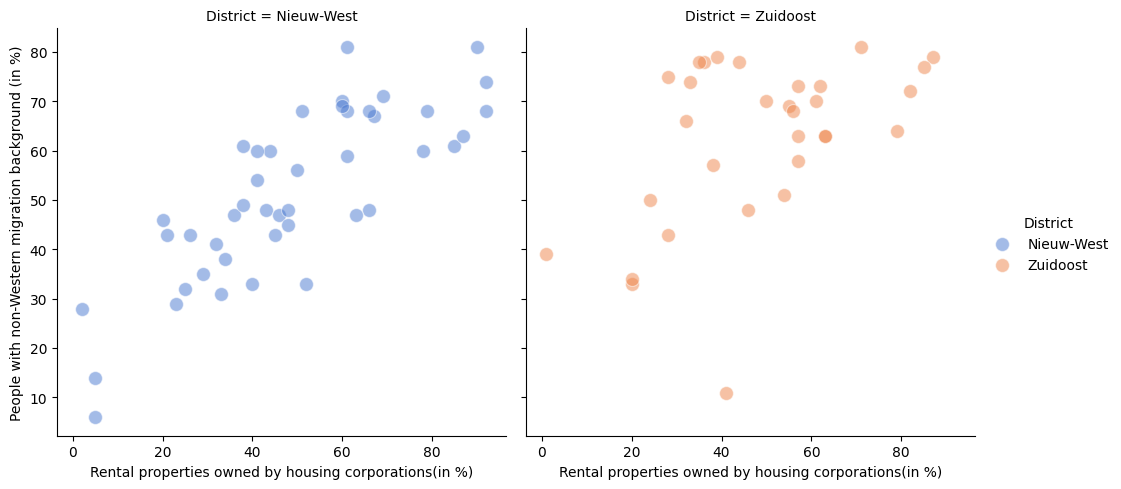- Collection, cleaning and preparing data for this analisys you can find here
- Correlation coefficients for the features from the insights you can find here
Here, on this page, I would like to show you some insights I found in the data about amsterdammers. Let’s go:
Married couples with children in Amsterdam often also have a house and a car.
And mostly live outside a city centre close to other families with children.
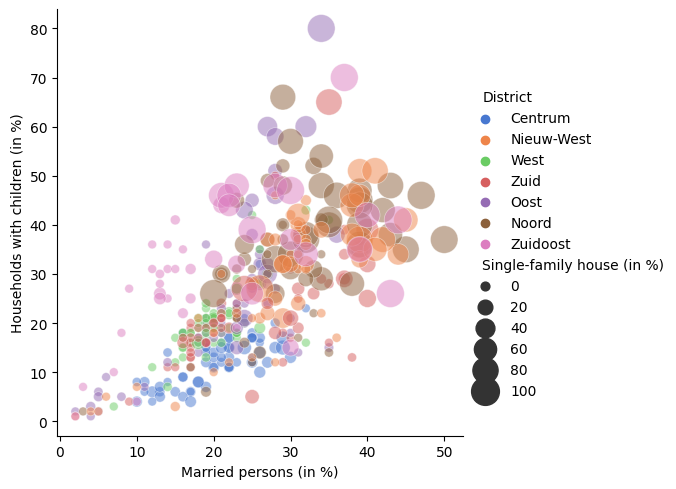
Residents who tend to use a lot of gas also use more electricity.
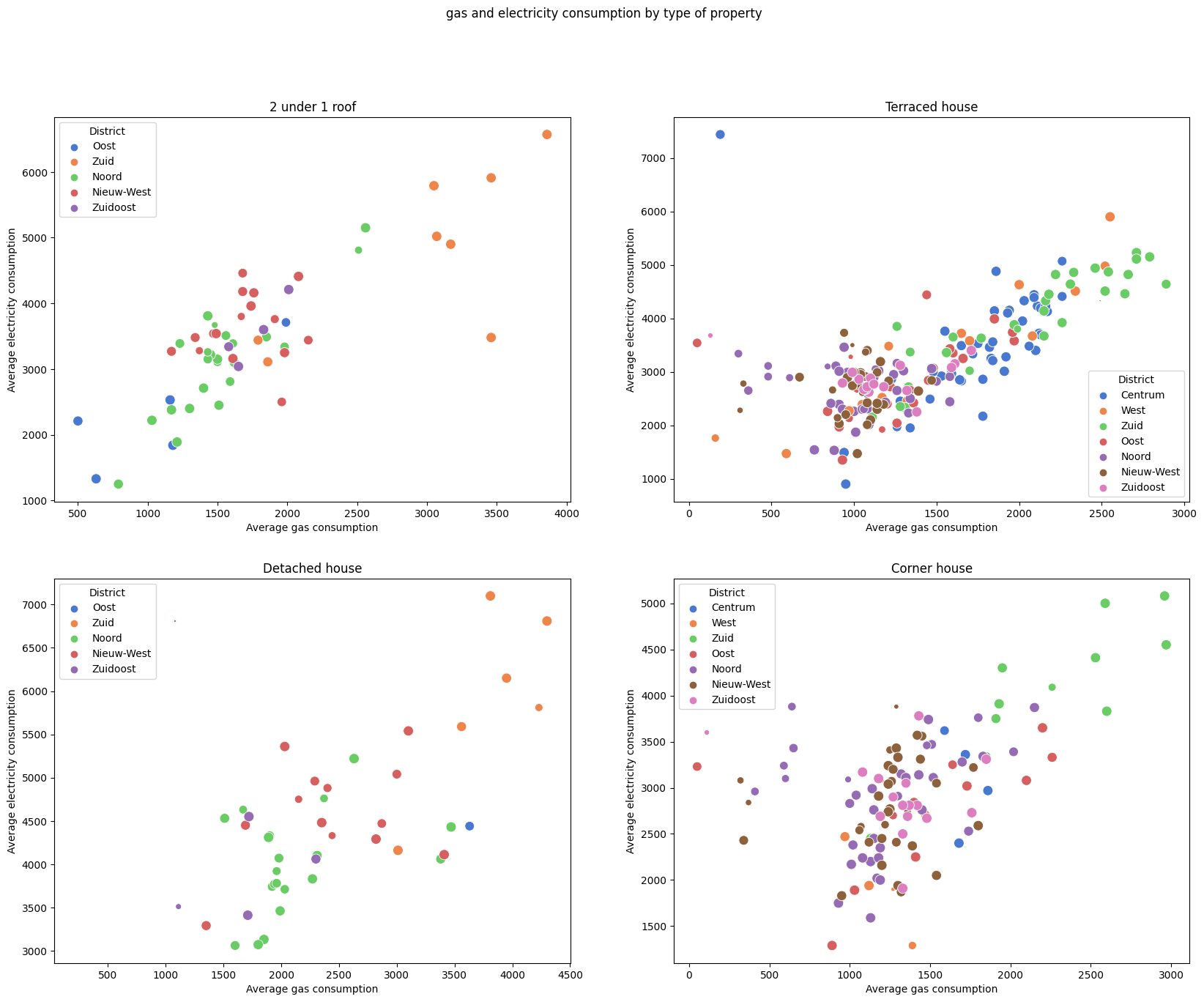
Residents who earns more, tends to use electricity more.

Self-employed residents earn more and live in the more expensive houses then employees.
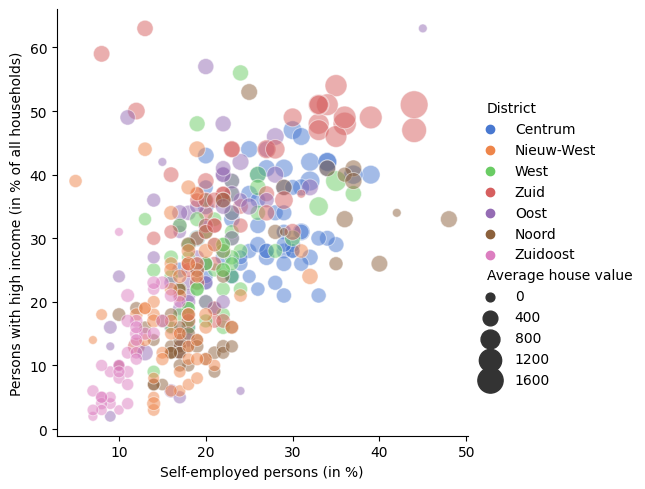
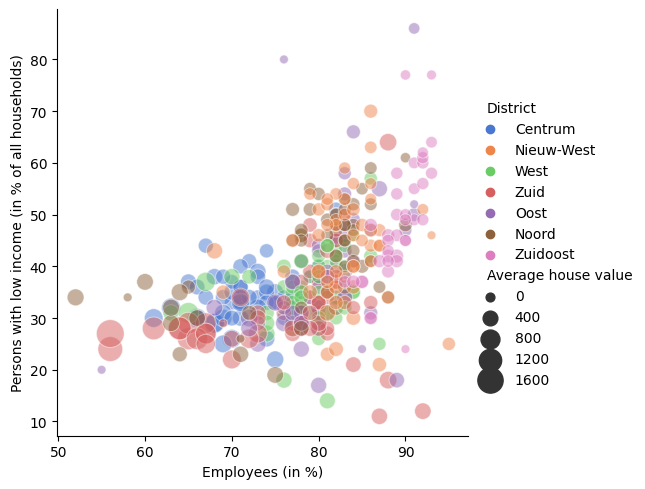
People with the same migration expirience choose to live in the same areas
Moroccans and Turks also live close by in Amsterdam.
Most of them also live in Nieuw-West, usually with kids.
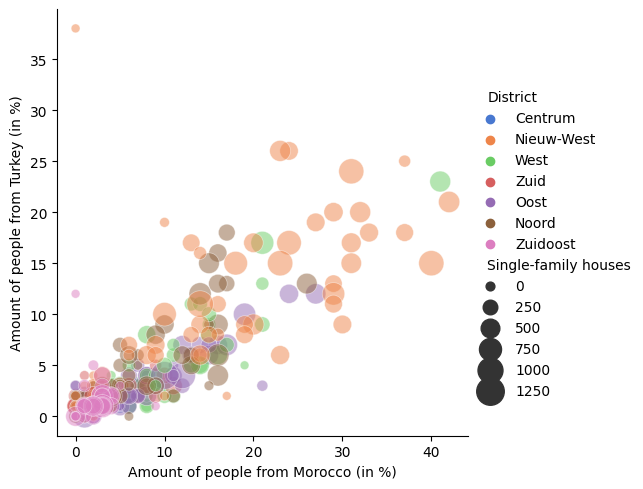
People who moved from Surinam, Antillies and Arube live close to each other:
Also from the chart below you can see that most of them live in the Zuidoost district.
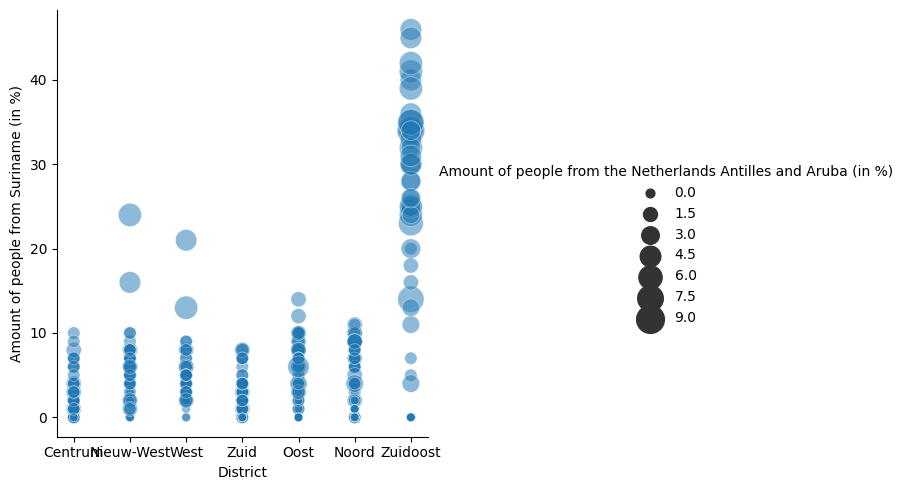
There is quite big differentiation in where dutch people, people with western and non-western migration background live.
And it looks like native dutch people doesn’t like to live next to the people with the non-western migration expirience.
On the plots below we can see that in different Amsterdam districts we can meet different kind of people:
-
Quite small amount of people with non-Western migration expirience (around 16.3% of the neighbourhood population in average) live in the Centrum district.
-
Same with Zuid district - only around 18.5% of the neighbourhood population are non-Western people (in average).
-
West is chosen more often by the people with non-Western migrantion background: in average 29.0% of the neighbourhood population, compare to around 20.7% of the people with the background from western countries. But most of the residents in the neighbourhoods (around 50.2%) are still Dutch, with inverse proportion to non-Western people
-
For the Noord and Oost districts we can see similar cases: relatively small amount of the people with western migration backgrounds (14.2% and 18.9% of the neighbourhood population respectively) and the number of Dutch is also inversely proportional to the number of non-Western migrants. As many dutchmans live in the neighbourhood, as less people from Morocco you can meet there, according to the pictures below.
-
Nieuw West looks more mixed: there is still inverse proportion relationship between Dutch and non-Western people, but they are much more evenly distributed among the area.
-
Pictures of the Zuidoost district shows us that relatively small amount of Duchman of people from Western countries chooses this district to live in. Most often only 22.0% and 11.0% are Dutch and Western people, compare to 67.0% of non-Western people in the neighbourhood population.


People from non-Western countries often rent a houses from housing corporation, but people with Western migration background lke to rent from other kind of property owners.

